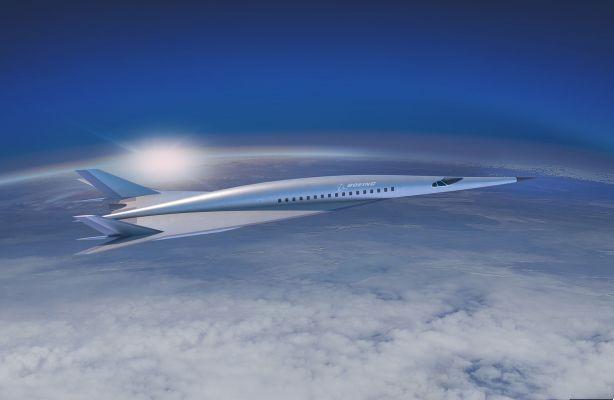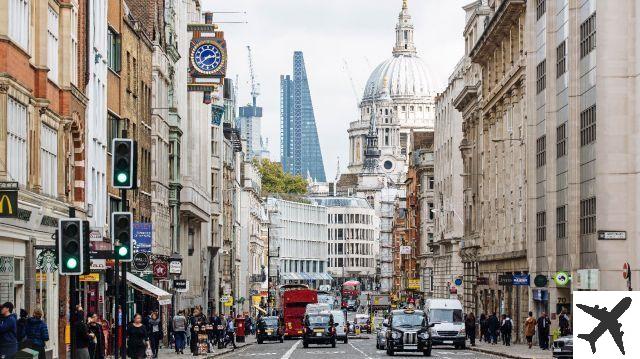
In the constant search to reduce travel times, ultrafast or supersonic aircraft are presented as a promising solution. These high-speed planes could allow us to travel from London to New York in record time, such as two hours, three hours or even 90 minutes. Both users and NASA and Boeing show great interest in the development of hypersonic commercial aircraft. In this article, we will explore the latest developments in this field and how they could revolutionize the aviation industry.
What are ultrafast airplanes?
Ultra-fast aircraft, also known as supersonic aircraft, are aircraft capable of flying at speeds greater than the speed of sound. This means they can reach speeds of Mach 1 or even higher, allowing them to significantly reduce flight times compared to conventional aircraft. These aircraft use advanced technologies, such as high-power engines and optimized aerodynamic design, to achieve these extreme speeds.
The interest of NASA and Boeing in hypersonic aircraft
Both NASA and Boeing have expressed interest in developing commercial hypersonic aircraft. NASA has been researching and testing hypersonic technologies for years, with the goal of improving the efficiency and safety of high-speed flight. For its part, Boeing has recently announced its intention to develop a hypersonic aircraft capable of transporting passengers commercially. Both organizations see the potential for ultra-fast aircraft to revolutionize the aviation industry and offer a faster, more efficient travel experience.
Benefits of ultra-fast airplanes
Ultra-fast aircraft offer a number of significant benefits compared to conventional aircraft. First, they dramatically reduce flight times, allowing passengers to reach their destination in much less time. This is not only convenient for travelers, but can also have a positive impact on international business and trade by making it easier to connect between different cities and countries.
Another important benefit is the ability to make long-distance trips in a single day. With ultra-fast planes, it would be possible to fly from London to New York for a business meeting and return on the same day, eliminating the need to spend the night in another country. This could save time and accommodation costs for businesses and travelers.
In addition, ultra-fast planes could help reduce congestion at airports. By reducing flight times, more flights could be scheduled on the same day, allowing air travel demand to be distributed more efficiently. This could help relieve pressure on the most congested airports and improve the travel experience for all passengers.
Challenges and considerations
Despite the potential benefits, the development of ultra-fast aircraft also presents significant challenges. One of the main challenges is security. Flying at such high speeds requires advanced technologies and systems to ensure the safety of passengers and crew. Additionally, ultra-fast aircraft generate higher noise and vibration levels than conventional aircraft, posing additional challenges in terms of comfort and noise regulations.
Another major challenge is cost. Developing and manufacturing ultra-fast aircraft is an expensive process, which could affect ticket prices and limit their accessibility for most travelers. Additionally, the infrastructure needed to operate these aircraft, such as specialized runways and terminals, would also require significant investment.
FAQs
When could we see ultra-fast planes on the market?
While the development of ultra-fast aircraft is underway, it will still take time before they are available to the general public. The first commercial hypersonic flights are expected to begin in the mid-2030s, but this will depend on technological advances and regulations necessary to ensure the safety and viability of these aircraft.
What would be the environmental impact of ultra-fast airplanes?
The environmental impact of ultra-fast aircraft is an important issue to consider. While these planes could reduce flight times, they also consume more fuel and generate higher carbon emissions due to the high speeds at which they fly. However, advances in more efficient engine and fuel technology are expected to help mitigate this impact and make ultra-fast aircraft more sustainable in the future.
Conclusion
Ultra-fast aircraft represent the future of air travel, offering the potential to dramatically reduce flight times and improve efficiency in the aviation industry. Although there are still challenges to overcome, both NASA and Boeing are working on developing hypersonic commercial aircraft. If all goes according to plan, we could see ultra-fast aircraft on the market in the next decade. These technological advances promise to change the way we travel and open up new possibilities for travelers around the world.
Until next time,
The fortravelovers.com team


























